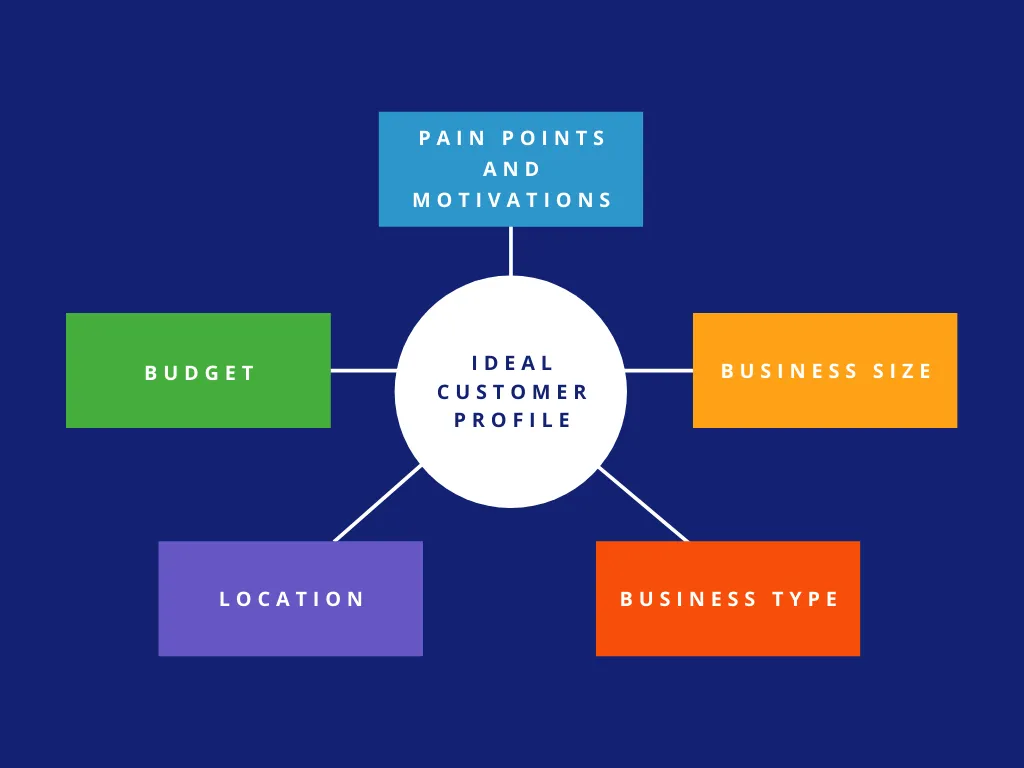Accelo Acquires Forecast, Adding Depth to AI and Capacity Planning Capabilities
Read the Press Release



A sales strategy is a written plan that outlines how your sales team will meet its revenue or business goals. While sales strategies differ from business to business, most plans lay out the following five components: your ideal customer profile, sales process, lead generation tactics, sales methodology, and sales metrics.
Armed with a sales strategy plan, you will more efficiently attract and close prospects, grow your business, and invest resources. Also, you will be able to confidently answer how you are going to reach your business goals.
So, without further ado, here are five tips on how to build a sales strategy.
When you are developing a sales strategy, many of your decisions revolve around your customers. So, first off, you have to know what your best customers look like. That way you can pick them out from the crowd of leads and avoid spending too much time selling to leads who aren’t a good fit for your service.
To do this, you need to define your ideal customer profile (ICP) — a categorical description of the customers who will receive the most value from your offering. These will be clients with shorter sales cycles and a higher willingness to pay. Not to mention, they will stay with you the longest.
Here are some attributes to consider when defining your ICP:

For instance, if you are selling consultancy services, maybe your ICP are small (10–50 employees) B2B tech companies that need help taking the step from a small startup to medium-sized businesses. Then, you can focus your outreach and marketing efforts on those specific companies, thereby giving you a higher return on your customer acquisition activities.
A sales process lists the repeatable steps your salespeople will take to walk a prospect from a cold lead to a paying customer. Most sales processes follow a similar format that includes six steps.
Your sales process might vary slightly. But what’s most important is making sure your entire team follows the same process. That way, you can analyze your sales process and make slight adjustments within each of the six steps.
You will be able to identify common holdups. For instance, if a lot of your team members are experiencing failed sales in the objection handling phase, it could be that your reps need better training in this area. Then provide it, and sales will move more smoothly through that step.
READ NEXT: 5 Time Management Hacks for Busy Sales Reps
Whether it’s cold calling, cold emailing, social selling, or inbound content marketing and advertising, you need to formulate a plan for how your team will generate new leads. Most sales strategies will have two parts of lead generation: outbound and inbound.
Your team will find leads that fit your ICP. This can be done with lead generation software or by researching manually on the web. Reps will then try to make contact to start a conversation, spark interest, and setting a follow-up meeting to go more in detail.
Your marketing department will use a variety of techniques from SEO to content marketing to attract potential buyers to your website. From there, they might download ebooks, check out your service, or fill out a contact form, which your team will answer.
A sales methodology is a selling strategy that guides how your sales reps interact with buyers during each part of your sales process. Popular selling methodologies include SPIN Selling, Consultative Selling, Soft Selling, and the Challenger Sale.
Which you choose to implement will depend on your service and client profile. No matter what you pick, it helps to have a philosophy to stick to when you come into problems during a sale. There’s a ton of literature on each sales methodology, so you will have practiced methods to deal with each situation.
READ NEXT: 5 Best Sales Podcasts for Fine-Tuning Your Skills
Your sales strategy is not complete until you have metrics in place to determine where you’re successful and how the team’s effectiveness overall can be improved. Having measurables provides insight into what is working in your sales strategy, which areas need more attention, and what adjustments can be made to increase revenue production and the output of each individual rep over time.
Here are five measurables and metrics that any sales organization should track:
The key thing to keep in mind is no one fix will dramatically change the output of a sales team - It takes small changes repeated consistently over time. But being armed with these insights can empower you to know where to make the most impactful changes.
More than anything else, consistency among your sales reps will bring revenue increases to your company. When you create a sales strategy that your team follows, you can spot areas for improvement and make adjustments, whether it’s to the sales process, lead generation, ideal customer profile, or methodology. It’s an iterative process optimizing your sales strategy, so don’t feel bad if your first one doesn’t pan out as you had hoped!
When you create a sales strategy with the five components we’ve recommended, you can expect to see more efficient salespeople, more predictable sales patterns, increased revenue, and more analytical decision-making around your sales activities.
If you need help implementing a sales strategy and tracking projects, sales, and reports, try a free trial of Accelo today.

